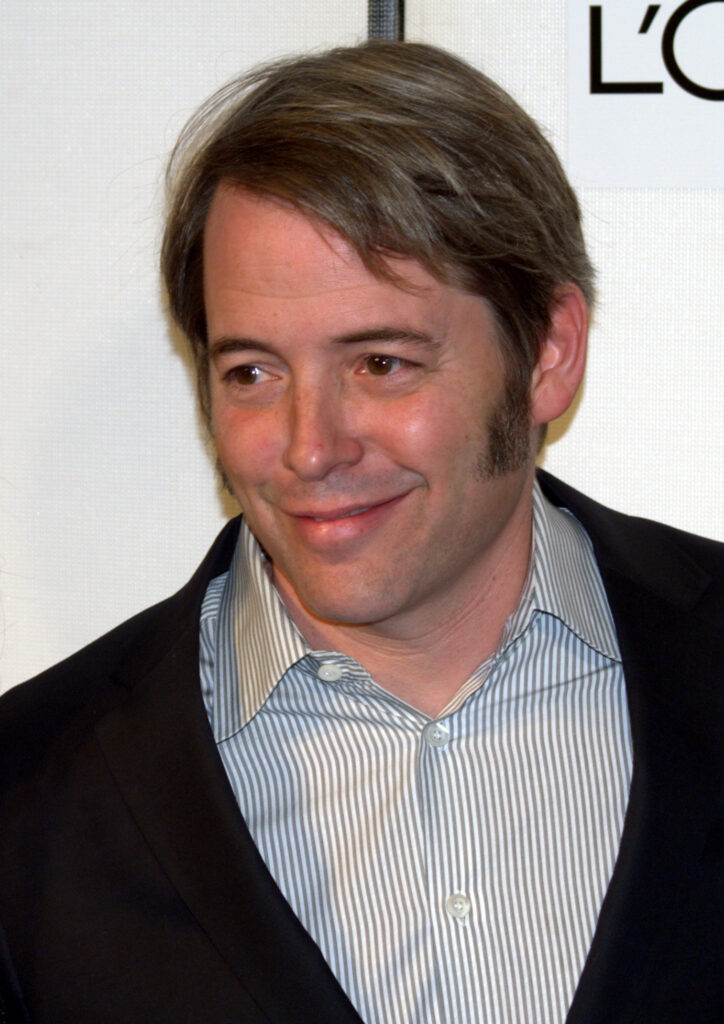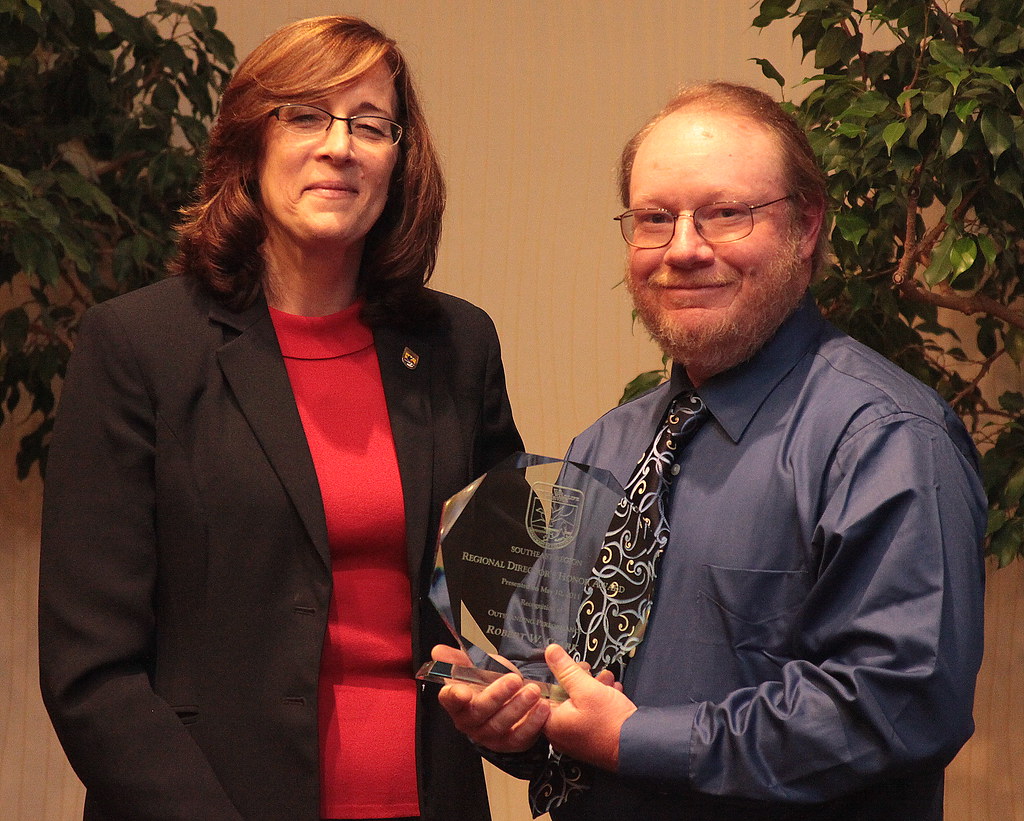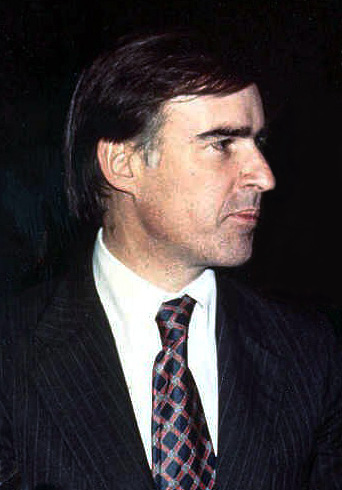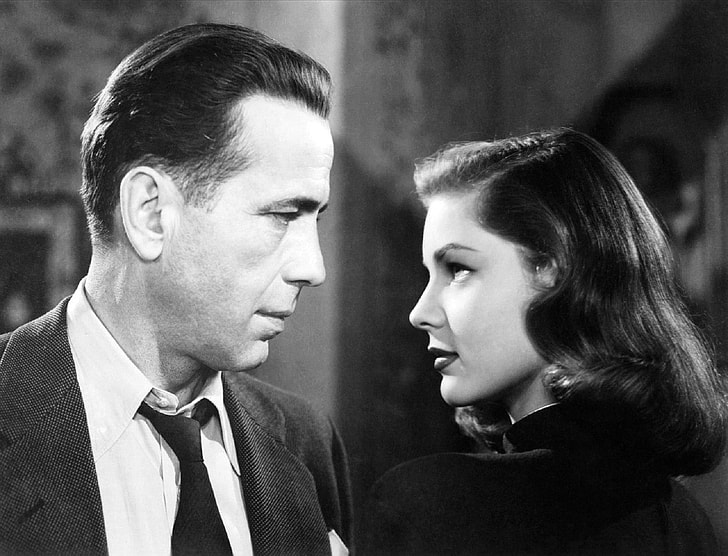
The world of Hollywood, often synonymous with glitz, glamour, and the pursuit of dreams, harbors a darker underbelly where tragedy can strike with devastating force. While cinematic magic is meticulously crafted for the screen, the real-life dramas unfolding behind the scenes or on the open road can leave indelible scars, forever altering the course of careers and lives. These aren’t just sensational headlines; they are poignant reminders of the fragility of life and the immense responsibilities that come with high-profile status, particularly when human error leads to irreversible consequences.
Among these somber narratives, few resonate with the chilling impact of the *Twilight Zone: The Movie* tragedy, an event that not only claimed three lives but also cast a long, unyielding shadow over the career of a celebrated director. This incident stands as a stark testament to the unforeseen perils lurking in the pursuit of cinematic realism, pushing the boundaries of safety to a catastrophic breaking point. It serves as a grim precursor to a series of other fatal incidents involving high-profile figures, incidents that have collectively forced a reevaluation of accountability, legal standards, and the moral compass of an industry built on illusion.
We embark on an in-depth exploration of these pivotal moments, beginning with the calamitous events on the *Twilight Zone* set. From there, we will navigate through the profound repercussions of other celebrity-involved fatal accidents, examining the intricate web of circumstances, legal battles, and personal reckonings that have shaped not only individual destinies but also the broader cultural landscape. These stories, though varied in their specifics, are unified by their tragic outcomes and the enduring questions they pose about responsibility, celebrity privilege, and the relentless march of justice.

1. **The Twilight Zone: The Movie Tragedy: John Landis’s Career-Defining Catastrophe**The set of *Twilight Zone: The Movie* on July 23, 1982, was meant to be a canvas for cinematic spectacle, transforming a film ranch in Valencia, Los Angeles, into a vivid wartime Vietnamese village. Presiding over this ambitious vision was 31-year-old John Landis, a director fresh off his successes with critically acclaimed films like *Animal House* and *The Blues Brothers*. His segment for the anthology film, featuring veteran actor Vic Morrow and child actors My-Ca Dinh Le, 7, and Renee Chen, 6, aimed for a visceral depiction of wartime chaos, a pursuit that would ultimately spiral into an unspeakable disaster, forever altering the perception of on-set safety and Landis’s career trajectory.
The scene, intended to show Morrow wading through knee-deep waters with a child in each arm, required intense special effects. As the make-believe village erupted in flames from gasoline-and-sawdust-powered mortars, a fully operational, three-ton Huey UH-1B helicopter hovered precariously 24 feet overhead. The fatal sequence began when a pyrotechnician, reportedly not looking up, fired a fireball that engulfed the helicopter’s tail rotor. In mere seconds, the massive machine plunged to the ground, crushing Renee Chen instantly, and the main rotor blade tragically decapitated both Vic Morrow and My-Ca Dinh Le, creating a scene of unimaginable horror for those present on set.
The tragedy was compounded by shocking disregard for labor laws and safety protocols. The two child actors, never having acted before, were illegally present on set at 2:30 AM, their parents receiving only a few hundred dollars. LA County Sheriff’s Sgt. Thomas Budds quickly concluded that criminal recklessness played a significant role, painting a picture of a “brash, bigshot director who thought little of risk and whose staff were scared to second-guess him.” Key testimony, including a cameraman recalling Landis joking, “We may lose the helicopter,” underscored a pervasive culture of risk and neglect, exacerbated by prior warnings about oversized explosions and placing children near gasoline drums. These alarming details led to Landis becoming the first Hollywood director to face criminal charges for a death on set, confronting involuntary manslaughter accusations.
Despite the gravity of the charges, Landis and four staffers were acquitted on May 29, 1987, after a 10-month trial. The defense successfully argued it was an “unforeseen” accident, a verdict that prosecutor Lea D’Agostino and Sgt. Budds attributed to Landis’s celebrity influence. While Landis continued to direct films, the *Twilight Zone* incident marked a permanent turning point; he “never had a hit again after the 80s,” falling into “relative obscurity.” The Directors Guild of America subsequently reprimanded Landis and tightened safety procedures, contributing to a significant reduction in on-set fatalities in later decades, but the shadow of the tragedy persisted, a stark reminder of the ultimate cost of unchecked ambition.

2. **Matthew Broderick’s Fatal Encounter in Northern Ireland**In the summer of 1987, actor Matthew Broderick, celebrated for his charming roles, found his vacation in Northern Ireland transformed into a life-altering tragedy. While driving a rented BMW 316 with actress Jennifer Grey, Broderick’s vehicle collided with another car on rain-slicked roads between Irvinestown and Maguiresbridge. The devastating mishap resulted in the immediate deaths of Anna Gallagher and her mother, Margaret Doherty, forever linking Broderick’s name to a profound and heartbreaking loss, far removed from the glitz of Hollywood.
Crucially, neither Broderick nor Grey had consumed alcohol, leading investigators to classify the incident as an unfortunate accident rather than one fueled by intoxication. However, this fact did not diminish the severity of the outcome; instead, it underscored the perilous nature of driving in hazardous weather conditions where a momentary lapse can have irreversible consequences. The legal aftermath proved contentious, with Broderick initially charged with reckless driving but ultimately convicted of the lesser offense of careless driving, receiving a mere $175 fine. This verdict, particularly the absence of vehicular manslaughter charges despite two fatalities, sparked widespread outrage, labeled a “travesty of justice” by the victims’ family, fueling debates about celebrity leniency within the legal system.
The repercussions extended deeply into the personal and professional lives of both actors. Jennifer Grey, in particular, grappled with profound psychological trauma and survivor’s guilt, leading to a significant hiatus from her acting career. While Broderick’s personal life eventually stabilized, the shadow of the Northern Ireland crash has remained an enduring, somber presence. This incident stands as a potent reminder that fame offers no immunity from the devastating consequences of human error, and that a single catastrophic moment on the road can leave an indelible, permanent mark on an individual’s legacy.
Read more about: Beyond the Limelight: 11 American Celebrities Whose Lives Were Forever Changed by Tragic Deaths

3. **Caitlyn Jenner’s Malibu Collision**In February 2015, the Pacific Coast Highway in Malibu became the scene of another high-profile tragedy when Caitlyn Jenner was involved in a multi-vehicle collision that claimed the life of 70-year-old Kim Howe. Jenner, a celebrated figure in the entertainment industry, was driving her Cadillac Escalade under the speed limit when she rear-ended a white Lexus. This initial impact triggered a devastating chain reaction, causing the Lexus to collide with an oncoming vehicle, ultimately leading to Howe’s fatality and injuries for others.
The incident quickly spiraled into a media frenzy, largely dominated by Jenner’s celebrity status and her ongoing gender transition. This intense public scrutiny, however, often overshadowed the tragic loss of life and the precise circumstances of the crash, sparking debates about the media’s sensationalist approach to high-profile incidents. The multi-vehicle pile-up underscored the inherent dangers of high-speed highways, where even a seemingly minor misstep can initiate a cascading series of impacts with severe outcomes, emphasizing the critical need for maintaining safe driving distances and exercising utmost caution.
In the aftermath, Jenner faced multiple legal battles, culminating in an $800,000 settlement for medical expenses and attorneys’ fees for several plaintiffs, though a wrongful death lawsuit from Kim Howe’s stepchildren was dismissed. These legal proceedings, alongside the relentless media attention, brought into sharp focus the complexities of car accident litigation involving celebrities and the broader questions of accountability. Despite the legal resolutions, the Malibu collision remains a significant and somber chapter in Jenner’s life, serving as a powerful reminder of the profound and far-reaching impact of a tragic moment on the road.
Car Model Information: 2023 Cadillac Escalade Premium Luxury
Name: Cadillac Escalade
Caption: Fifth generation Cadillac Escalade
Manufacturer: Cadillac
Production: 1998–present,2002–present (ESV),2001–2013 (EXT),2008–2013 (Hybrid)
ModelYears: 1999–2000,2002–present
Class: Full-size,luxury car,sport utility vehicle
Related: ubl
Layout: Front-engine, rear-wheel drive layout,Front-engine, four-wheel drive layout
Categories: 2000s cars, 2010s cars, 2020s cars, All-wheel-drive vehicles, All Wikipedia articles in need of updating
Summary: The Cadillac Escalade is a full-size luxury SUV manufactured by General Motors and marketed by Cadillac as its first major entry into the SUV market. The Escalade was introduced for the 1999 model year in response to an influx of new luxury SUVs in the late 1990s including the Mercedes-Benz M-Class, Range Rover, Lexus LX, and Ford’s 1998 debut of the Lincoln Navigator. The Escalade project went into production only ten months after it was approved. The Escalade is built in Arlington, Texas.
The term “escalade” refers to a siege warfare tactic of scaling defensive walls or ramparts with the aid of ladders or siege towers. More generally, it is a French word which is the noun-equivalent form of the French verb escalader, which means “to climb or scale”.
The Escalade is currently sold in North America and select international markets (Europe and Asia) where Cadillac has official sales channels. The Escalade ESV (Escalade Stretch Vehicle) is sold in North America, Russia, and the Middle East, but is only available by special order in some international markets. The right-hand-drive Escalade and Escalade ESV are available through third-party conversion specialists without official agreement with Cadillac in Australian, Oceanic, and Japanese markets.
On August 8, 2023, GM presented the Escalade IQ, an all-electric version of the Escalade, and the third model in Cadillac’s EV line, after the Celestiq, and Lyriq. It is expected to go on sale in late 2024 for the 2025 model year, with a starting price of $130,000.
The Escalade has gone through five generations, the most recent (the fifth) prsented in 2021, noted for its technology and self-driving capability. The fifth generation Escalade is nearly two metres high, and was criticized by The Verge for its excessive size and hazard to pedestrians.
Get more information about: Cadillac Escalade
Buying a high-performing used car >>>
Brand: Cadillac Model: Escalade
Price: $62,995 Mileage: 44,458 mi.

4. **Rebecca Gayheart’s Tragic Mistake**The year 2001 marked a profound and tragic turning point for actress Rebecca Gayheart, then a flourishing star, when a fateful decision while driving in Los Angeles led to the death of nine-year-old Jorge Cruz Jr. The accident occurred as Gayheart swerved around stopped vehicles, tragically striking Jorge as he chased a soccer ball across the street. This devastating incident instantly cast a long, dark shadow over her life and career, transforming her public image from a rising star to a figure indelibly associated with an unspeakable loss.
Crucially, this accident, devoid of alcohol or excessive speeding, highlighted a different yet equally dangerous driving error: a momentary lapse of patience and judgment. Even seemingly minor miscalculations, such as swerving around stopped traffic without full awareness of the surroundings, can have catastrophic consequences, particularly in urban environments where vulnerable pedestrians are present. This tragic event served as a chilling reminder that unwavering vigilance and strict adherence to all road safety rules are paramount, as a single ill-advised maneuver can shatter lives and inflict enduring trauma.
Following the accident, Gayheart pleaded no contest to vehicular manslaughter, accepting a sentence of three years probation, a suspended driver’s license, a fine, and community service. The emotional and psychological toll was immense; she openly grappled with severe guilt, depression, and PTSD, even contemplating suicide. Offering financial assistance to the Cruz family and later settling a wrongful death lawsuit, Gayheart channeled her anguish into charity work with organizations like Chrysalis. Yet, the weight of the tragedy continues to define a significant part of her narrative, serving as a poignant and enduring reminder of the life-altering consequences of a single, tragic mistake on the road.
The previous narratives have illuminated the devastating consequences that even unintentional errors on the road and set can unleash upon the lives of public figures and their victims. Yet, the spectrum of celebrity-involved tragedies extends further, encompassing incidents where the specter of impaired driving, whether by alcohol or other substances, adds another layer of complexity and culpability. While some of the prior cases, devoid of intoxication, underscored the pervasive dangers of mere human fallibility, we now turn our gaze to a series of events that not only shattered lives but also amplified national conversations surrounding responsible behavior behind the wheel, especially when amplified by the unforgiving glare of celebrity.
Read more about: Beyond the Limelight: 11 American Celebrities Whose Lives Were Forever Changed by Tragic Deaths

5. **Brandy Norwood’s Freeway Fatality: A Collision on the 405**In late 2006, the glittering façade of celebrity was once again fractured by a devastating real-world tragedy, this time involving the acclaimed singer and actress Brandy Norwood. On December 30, a multi-car collision unfolded on the notoriously busy 405 Freeway in Los Angeles, an incident that would result in the death of a 38-year-old woman and embroil Norwood in a prolonged period of intense public and legal scrutiny. This event, occurring on one of the city’s vital arteries, immediately drew widespread attention, forcing a raw reckoning with the fragility of life on the open road.
The collision’s mechanics were a cascading series of unfortunate events, initiating when Norwood, driving her Land Rover at approximately 65 miles per hour, struck the rear of a 2005 Toyota. This initial impact proved to be the catalyst for a chain reaction, propelling the Toyota sideways into the freeway’s center divider, where it was then struck by another oncoming vehicle. The graphic sequence of events highlighted with sobering clarity the inherent dangers of high-speed highways, where even a seemingly minor miscalculation of distance or speed can trigger a domino effect, transforming routine commutes into scenes of unimaginable devastation.
In the aftermath, the absence of alcohol or drugs in Norwood’s system meant that criminal charges, such as involuntary manslaughter, were not pursued by law enforcement. However, this did not insulate her from the immense legal and emotional repercussions. The parents of the deceased woman, Awatef Aboudihaj, filed a substantial $50 million wrongful-death lawsuit against Norwood, alleging reckless driving. This civil action, rather than criminal prosecution, placed Norwood firmly under the microscope of public opinion and legal scrutiny, prompting wide-ranging discussions about celebrity accountability and the adequacy of legal redress in cases of tragic loss.
Norwood, profoundly affected by the incident, expressed deep remorse and publicly offered her heartfelt apologies for the tragic event. The emotional toll was undeniably immense, as she grappled with significant emotional distress and the crushing gravity of the loss experienced by the victim’s family. Her candid reflections on the incident and her enduring struggles with its consequences underscore the profound, life-altering impact that such a moment can inflict, serving as a poignant reminder that fame offers no shield against the deeply human burden of responsibility and grief.

6. **Paris Hilton’s Reckoning: The High-Profile Price of Impaired Choices**While the preceding narratives have often focused on accidents devoid of intoxication, a different, equally alarming reality frequently emerges within the realm of celebrity: the prevalence of DUI-related incidents. The sobering statistic that approximately 30 people lose their lives daily in DUI-related car collisions in the United States alone underscores the critical importance of preventing drunk driving, a message that becomes particularly amplified when high-profile figures are involved. The actions of celebrities and the subsequent media coverage they generate possess an undeniable power to shape societal attitudes and behaviors concerning drinking and driving.
Among the most well-documented instances of celebrity DUI is the case of socialite and reality television star Paris Hilton. In 2006, Hilton found herself arrested for driving under the influence after law enforcement observed her driving erratically. The incident, which occurred following her consumption of margaritas, quickly became a focal point of intense media scrutiny, propelling the conversation about celebrity responsibility and the dangers of impaired driving into the national spotlight. Her arrest and subsequent legal proceedings served as a stark, public reminder that even those accustomed to lavish lifestyles are not exempt from the law’s reach or the potentially devastating consequences of poor judgment.
The media’s relentless coverage of such high-profile DUI cases, like Hilton’s, creates a significant ‘ripple effect’ within society. This amplification not only subjects the celebrities themselves to intense scrutiny from both the justice system and the public but also critically influences public perceptions of drunk driving. The widespread dissemination of these narratives can either demonize individuals or, more constructively, highlight systemic issues of substance abuse and privilege, thereby shaping societal responses to drunk driving and influencing broader discussions about the necessity for more stringent DUI laws and comprehensive awareness campaigns.
Hilton’s legal consequences, including probation and a period of incarceration for violating that probation, underscored the gravity of DUI offenses and the judicial system’s growing intolerance for such infractions, even among the well-connected. These public reckonings serve as powerful deterrents, not only for other celebrities but also for their vast fan bases and the wider public, illustrating unequivocally that combining alcohol with driving carries severe risks and significant repercussions, irrespective of one’s status or public persona.

7. **Lindsay Lohan’s Spiraling Saga: Charges and Consequences**Continuing the disquieting trend of celebrity DUI incidents, the tumultuous career of actress Lindsay Lohan provides yet another potent illustration of the perils inherent in impaired driving. Lohan’s recurrent struggles with the law, particularly those involving driving under the influence, garnered extensive media attention and sparked considerable public debate, cementing her status as a cautionary figure regarding the intersection of celebrity, substance abuse, and personal accountability. Her narrative became a recurring headline, a dramatic arc played out under the unforgiving scrutiny of global media.
In 2007, Lohan faced significant legal charges that included driving under the influence and and possession of cocaine, painting a grim picture of escalating personal challenges. These charges followed incidents where her driving was deemed erratic and unsafe, directly linked to her intoxication. The specifics of her arrests, and the details that emerged from police reports and court proceedings, underscored the profound dangers not only of alcohol impairment but also the additive risks posed by other illicit substances when combined with operating a vehicle.
The intensive media scrutiny surrounding Lohan’s multiple arrests and court appearances further magnified the repercussions of her actions. Each new development in her legal saga became front-page news, serving to reinforce the public message about the severity of DUI offenses. The protracted legal battles, probation violations, and periods of mandated rehabilitation that characterized her experience illustrated the arduous and often unforgiving path to accountability within the justice system, particularly for those whose lives are constantly under public surveillance.

8. **Bob Clark’s Fatal Collision: The Director’s Unforeseen End**The tragic narratives of celebrity-involved fatal incidents tragically include stories where the victim, rather than the perpetrator, is the high-profile individual, often due to the recklessness of another driver under the influence. Such was the profoundly sorrowful end for Bob Clark, the esteemed director behind beloved cinematic classics like *A Christmas Story* and *Baby Geniuses*. On the morning of April 4, 2007, Clark’s life, along with that of his son Ariel, was abruptly and violently cut short in a head-on collision on the Pacific Coast Highway in California, a stark reminder of the random cruelty that impaired driving can inflict.
The circumstances of the crash were tragically straightforward yet devastating. Hector Velazquez-Nava, operating his SUV, veered across the median into oncoming traffic, directly striking Clark’s vehicle. The sheer force of the impact claimed the lives of both Bob Clark and his son Ariel instantly. This act of grave negligence was soon compounded by a series of alarming revelations during the subsequent investigation: Velazquez-Nava was found to be three times over the legal alcohol limit, driving without a valid license, and identified as an illegal immigrant from Mexico.
The legal system swiftly moved to address the egregious nature of Velazquez-Nava’s actions. He was sentenced to a six-year prison term, a consequence for the lives he so carelessly extinguished. Following his incarceration, he would then face deportation proceedings, underscoring the severe and multi-layered repercussions of his intoxicated driving and reinforcing the urgent need for stringent enforcement of DUI laws.

9. **Jerry Brown Jr.’s Final Ride: A Teammate’s Tragic Mistake**The intersection of celebrity, sports, and fatal DUI incidents adds another layer of complexity, often involving the tragic loss of promising athletic careers due to the impaired choices of teammates or associates. Such was the heart-wrenching case of Jerry Brown Jr., a talented American athlete and football player, whose life was cut short just two months after being signed to the Dallas Cowboys practice squad. His burgeoning career, filled with immense potential, was extinguished on December 8, 2012, in an accident that underscored the devastating ripple effects of drunk driving within close-knit communities, particularly those in professional sports.
Brown was a passenger in a car driven by his fellow teammate, Josh Brent, on Texas State Highway 114. The details of the crash are chillingly familiar: Brent, reportedly speeding, lost control of the vehicle, which struck a curb and subsequently flipped at least once. When emergency responders arrived at the scene, Jerry Brown Jr. was found unresponsive, and despite immediate efforts, he was later pronounced dead. This devastating event not only represented an unspeakable personal loss but also sent shockwaves through the Dallas Cowboys organization and the wider NFL community.
The legal repercussions for Josh Brent were severe and immediate. He faced charges of both DUI and manslaughter, initiating a legal battle that would attract national attention. His conviction and subsequent sentencing served as a stark, public declaration that the legal system holds individuals accountable for such grave negligence, regardless of their athletic prowess or team affiliation. The incident highlighted the immense pressures and temptations that professional athletes can face, but also emphasized the non-negotiable expectation of responsible conduct.
The tragic death of Jerry Brown Jr. due to his teammate’s impaired driving became a deeply affecting moment for many. It underscored not only the direct consequences of drunk driving but also the profound collective grief and disruption it can cause within tightly bound professional circles. The incident sparked renewed conversations within sports leagues about player welfare, substance abuse education, and the crucial need for teammates to look out for one another beyond the field.
**Concluding Thoughts: The Enduring Shadows of Reckless Roads and Sets**
As we draw this comprehensive journey to a close, the recurring motif of profound, irreversible loss echoes with a sobering clarity. The narratives woven through these pages, from the catastrophic on-set failure of *Twilight Zone: The Movie* to the heart-wrenching string of celebrity-involved fatal collisions, paint a vivid and often painful portrait of how quickly lives can be upended and legacies forever altered. Whether born from a perilous pursuit of cinematic realism, a momentary lapse of judgment on a rain-slicked road, or the inexcusable choice to drive while impaired, each incident serves as a stark testament to the immense and often unbearable weight of responsibility.
The cases of John Landis, Matthew Broderick, Caitlyn Jenner, and Rebecca Gayheart, devoid of intoxication, yet steeped in devastating outcomes, compel us to confront the pervasive fragility of life and the unforeseen consequences of human error. They remind us that diligence, caution, and adherence to safety protocols are not mere suggestions but absolute imperatives, whether navigating a complex film set or simply driving down a highway. These stories underscore how public figures, despite their celebrity, are ultimately subject to the same laws of physics and the same human fallibility as anyone else, with their mistakes often amplified under the relentless glare of the public eye.
Conversely, the tragic accounts involving Brandy Norwood, Paris Hilton, Lindsay Lohan, Bob Clark, and Jerry Brown Jr. illuminate an even darker facet of this issue: the devastating and entirely preventable toll of impaired driving. These incidents serve as an urgent, unequivocal call to action, demanding greater individual accountability and a reinforced collective commitment to preventing drunk and drugged driving. The ripple effects of such choices extend far beyond the immediate crash site, touching families, communities, and shaping broader societal perceptions about responsibility, privilege, and the fundamental right to safety on our roads.
Ultimately, these narratives, though distinct in their specifics, are unified by their shared message: the profound and often permanent alteration of lives and careers in the wake of tragedy. They compel us to reflect on the immense value of every human life, the enduring power of empathy for victims, and the non-negotiable imperative for caution, compliance, and responsible choices. In Hollywood’s spotlight and on the world’s roads, the shadows cast by these fatal incidents persist, serving as enduring monuments to lives lost and lessons learned, forever etched into the annals of public memory.



